#ondrej prosicky
Explore tagged Tumblr posts
Text

Ornate Hawk-eagle
Ondrej Prosicky / Getty Images
33 notes
·
View notes
Text
Spectral tarsiers in a ficus tree in Tangkoko Batuangus Nature Reserve, Indonesia
© Ondrej Prosicky
Shutterstock
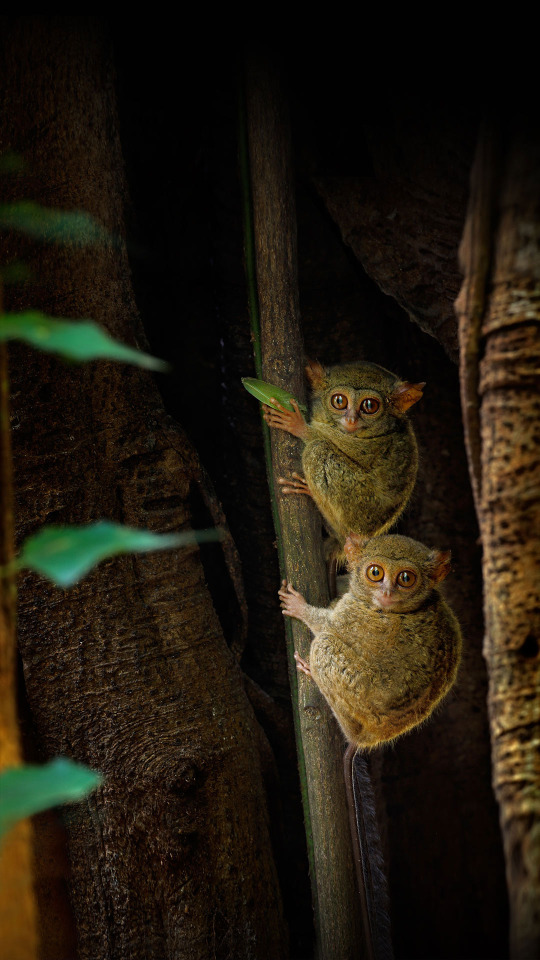
#Ondrej Prosicky#shutterstock#Spectral tarsiers in a ficus tree#Tangkoko Batuangus Nature Reserve#indonesia#original photographer#art#artists photographie#original art#photographer#colors nature aurora#natural color night photography#art style#de tot#fotos art#xpuigc#xpuigc bloc
15 notes
·
View notes
Photo

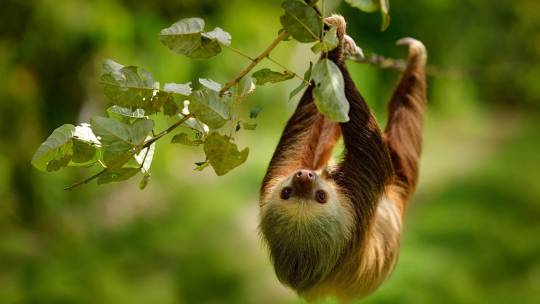
A Hoffman’s two-toed sloth near Puerto Viejo, Sarapiquí, Costa Rica © Ondrej Prosicky
#ondrej prosicky#hoffman's two-toed sloth#sloth#fauna#flora#photography#puerto viejo#sarapiqui#costa rica#nature#animals#wildlife#travel#earth#wallpaper#lockscreen#windows10spotlight
11 notes
·
View notes
Text
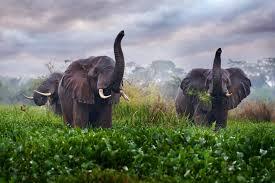
Day 842 of posting pictures of elephants.
Source: Ondrej Prosicky
#cute animals#cuteness#elephant#image of the day#not my image#cuteness overload#elephants#wildlife#adorable#nature
110 notes
·
View notes
Text
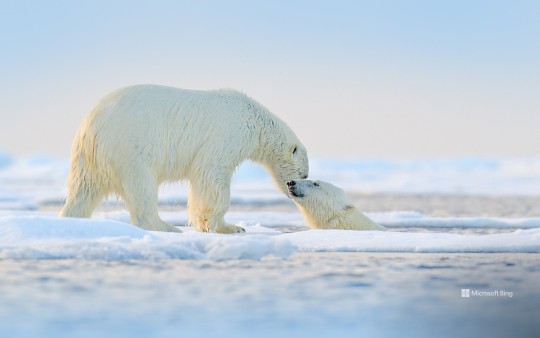

Polar bears at play in the Arctic © Ondrej Prosicky/Shutterstock
Today on Bing- January 1, 2025 Polar bears in the Arctic
Have an ice New Year's Day | EN-CA, EN-CN, EN-GB, EN-US, ROW
25 notes
·
View notes
Note
An enrichment question for YOU: do you think Whitestone would have a specific local breed of cat (separate from regular moggies) and if yes, what do you think it'd be like, both appearance and temperament wise? Norwegian Forest Cat, Russian Blue, something like the wild tree-climbing cats that apparently exist in the Parchwood (mentioned in the Briarwood Arc, when they're trying to find the tunnel into the castle) or something else entirely?
Additionally, how do you think magic might affect both cats and cat breeding, especially the latent divine magic in the Alabaster Sierras due to the godsblood in the whitestone. Do you think you'd end up with divinely magical cats due to magic seeping into the groundwater, plants, and thus up through the trophic levels?
Finally getting to this one!
I’ll first poke at your thing about magic: unfortunately, if the cats are impacted by the magic, the people would be as well. People eat their livestock and game from the forest which would likewise be exposed to any magical effects of the whitestone. We talked about that a bit, but if we’re just going off canon then I don’t think the latent magic of the land would impact the cats much. Its main influence would be on the existence of feral populations at all: with so many monsters in the area, the cats would either have to be decently dependent on humans to survive, or hardy and capable of getting out of reach of their predators.
Now to the meat of things: there are two answers to this!
The first one is the boring, likely one: see, cat breeds are a relatively new thing. Compared to dogs, which have had populations bred for specific tasks since over 2300 years, cats are mostly left to do their own thing. While the idea that cats domesticated themselves is an oversimplification, it’s hard to make a cat better at its job - hunting vermin and being cute. Dogs and livestock and pigeons (people forget so often that pigeons were a big deal and are domestic, but that’s a rant for another day) were all selectively bred for different uses: herding and ratting are different skillsets, as is herding cattle versus herding sheep, and you might not need as much wool in a warm climate and might prefer faster growth or more meat, for instance.
So Whitestone likely has a landrace breed of cats - these are cats which were just selected for by isolation and the requirements of their habitat (and some preference for their look by their people). Notable examples of such cats are many big longhair breeds - Norwegian forest cats and Siberians for instance - and some recognized by a quirk of coloration - like the high-white Turkish Angora and Van or the pointed Siamese. Given Whitestone’s climate, they’d likely have cats similar to the original Norwegian forest cats (henceforth NFCs): big bodied, huge paws, a thick double coat, smaller tufted ears. Just your basic big fluffy cat adapted for the cold. Due to the abundant forests, black tabbies would likely be most common - this is the default that tends to get selected for in wooded areas where inbreeding isn’t too bad.
To be honest, you could probably just transpose NFCs and dub them Parchwood forest cats and call it a day. Longhair black mackerel/classic tabbies with some white, with smatterings of other colors from rare travelers who brought their pets with them. They even have a fitting backstory, having likely been ship cats for Vikings and acclaimed for their climbing ability.
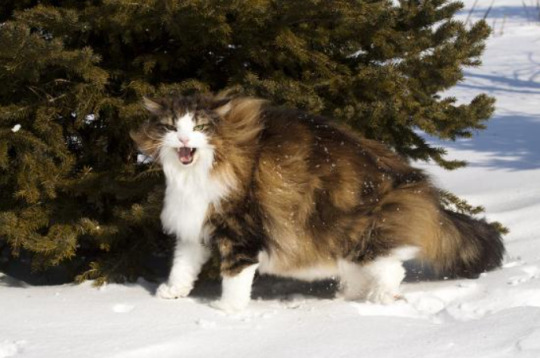
(Photo credit: Lynn M. Stone)
But why stop there?
[more under the cut]
Matt specifies that these tree-climbing cats are ocelot-like, which should mean a wild species that may or may not be able to hybridize with the domestic cats. This is where things get interesting - ocelots are good climbers, sure, but given how the Parchwood is chock full of shit worse than anaconda or jaguar I’d lean more towards the margay:
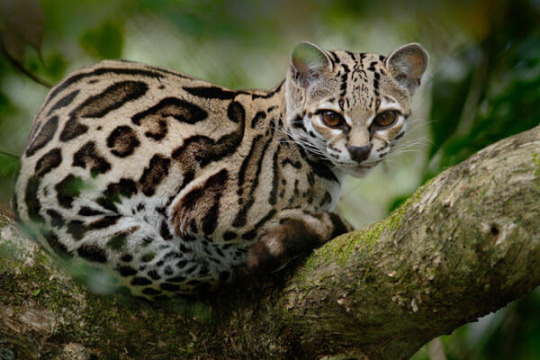
(Photo credit: Ondrej Prosicky)
Margay are arguably the most arboreal cat, with extremely flexible joints, mottled spots for camouflage in the canopy, long tails and big ol eyes. Furthermore, they can hybridize with domestic cats [1] (though with fertility issues - but these aren’t exactly margays, so we can potentially do away with that). The original margay hybrid breed died out, however margay hybrids were absorbed into the Bengal - which is already a hybrid with Asian leopard cats. Fun (sarcasm).
(I do not endorse the breeding of further gen 1 hybrid cats - these animals and even offspring a gen or two down are far beyond the care of most potential owners. Bengals and their ilk are beautiful animals, but no more wild content should be added when populations of said wild cats are under threat. You don’t need a hybrid cat to be cool when you hardly play with a normal moggy. Rant over.)
The problem is that margays are really small - 4kg is a decently large male (for reference, my moggy runt Miss Thing weighs that much!), whereas NFC are 3 1/2 to 9kg. That’s… not going to go well - thankfully, cold climates tend to select for larger animals (better retention of body heat), so we could say these sorta-margays are larger than their IRL tropical counterparts and could hybridize with the local Parchwood cats.
This is unlikely to occur naturally, because cats do try to stick to breeding with individuals who will produce fertile offspring with them and the ‘living near the humans’ PFCs and ‘staying the fuck away from monsters by hiding in trees’ margay-ish cats will have little territorial overlap… however! We do have an IRL example of natural hybrids occurring often - this is the sad case of the decline of European wildcats [2]. Due to habitat loss and the abundance of domestic cats, they’re crossbreeding with these available mates, reducing the pure wildcat genetic content in surviving populations. Potentially something could have happened at some point in the past of these margay-cats; perhaps the expansion into the Parchwood that resulted in the Grey Hunt being established?
So now instead of ‘NFCs with the trademark filed off’, we have huge, fluffy, long-tailed, flexible-joined domestic cats with a fair amount of wild margay-ish content, adept both up in the trees and in homes - nice! Them filling the niche of an extremely rare margay-type cat is… a mixed bag for me as a biologist, but I’d hope the ecological damage would be minimal given the abundance of predators in the Parchwood as well as the fact they’re just doing what the local predator was. The decline/hybridization of the margay-cats would suck, though :c
I would guess they’d have fairly small litter sizes and longer growth periods, finishing growth around age two, though reaching sexual maturity fairly young as cats are wont to do. Between their hardy ability to survive the cold and likely brown-to-gold color, with stunning rosettes, I could see them being associated with Pelor - little suns on their fur, and let’s say they tend towards gold eyes too. Likely fairly independent, extremely high prey drive. These will be our Parchwood forest cats, fancier name pending. They might look something like a Cashmere Bengal, except huge and even fluffier:

(Photo credit: Sirocco Cashmere Bengals)
That was the first option! What’s behind door number two?
Now, this is considerably less likely, given how small and isolated Whitestone is before Percy and Cassandra reclaim it and connect it to the broader world. There weren’t too many nobility in Whitestone at a given time (hence the original Wolfe de Rolo marrying his cousin Melanie, who murdered him). So the odds of there being a specific, fancy breed specifically kept by the upper class would be slim.
If there was, though, I love the idea of it being something like a German Rex:

(Photo credit: Natalia Fedosova)
I can’t find a link to the origin story that isn’t dead, but apparently the first cat was named Munk and bred liberally with the local females. They’re a short-haired breed, but more importantly their fur is wavy, and Munk was apparently an excellent fisherman (I loathe that I can’t include an English source - the Wikipedia article on the breed gives a decent summary to my understanding. Here’s a link for any German readers: [3]).
Given their German origins (and the fact Frumpkin takes the form of a shorthaired cat for Caleb, mimicking his childhood cat), we can guess that most cats in Wildemount are perfectly happy as shorthairs - potentially, these high-status cats in Whitestone could be descendants not of ship mousers but the beloved pets of the upper-class travelers. Or ones imported after Whitestone's founding, from family still in Wildemount.
Whitestone is cold as shit: to keep a cat with a coat like this comfortable year-round, you would need the resources to keep your home warm and comfortable, as well as providing food for it (whereas the local cats could hunt to supplement their diet). Moreover, the gene responsible for the wavy coat is recessive and likely rare in the population, so outbreedings with strays would be unlikely to produce kittens with the look. Less fur to shed might make them more appropriate a companion in the household, too - less likely to leave your lap in the winter, and not as much fur on all your expensive clothes.
Given that these would be kept by nobility, their coat colors would be heavily influenced by what their owners found pretty and worth breeding. I could see pale coats being desirable - unlike the PFC they do not need to worry about white fur giving away hunts in the summer, and white or gold fur could again bring to mind the gods. So potentially white, high-white bicolors and Siamese pointed dilute coats sounds about right. I could see them being very snuggly, social cats, given they're bred for companionship + would loathe the cold and want to stay warm by cuddling. Let’s call these the Alabaster rex. Named both for the mountains (the wavy fur even looks like hillsides! Cute!) and their pale color.
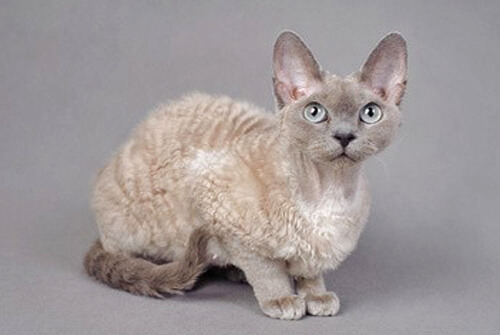
(Photo credit: Waldek Dąbrowski)
Keeping a cat, or cats, like this would be one hell of a status symbol in Whitestone due to all of the above. Sadly, given that coat, I’d suspect that most would have died out during the Briarwoods’ reign unless some community members were exceptionally devoted to keeping the cats alive. Some of these recessive wavy genes might exist among the PFCs, but reviving the breed would be exceptionally difficult. Especially given the original population would likely be ridiculously inbred to begin with (again, not many people could keep these cats).
SO, tldr; we have one big, fluffy landrace breed, our Parchwood forest cats, which have hybridized with local tree-climbing cats. And, potentially, some dainty, wavy-furred Alabaster rex in pale coats kept by the nobility (which, if they existed at all, might be extinct).
TBH, I can’t see Percy, Cass or Vex having much interest in keeping cats who rely so heavily on them, so though they might aid in reviving the breed (I bet they’d be popular in the Cloudtop district lmao), most of the cats in the castle and Grey Hunt manor would likely be of the PFC variety.
I’m not doing full proper citations for a funny post fuck that. BUT! Some further reading:
1. Hartwell, S. (1993) DOMESTIC X ASIAN LEOPARD CAT AND MARGAY HYBRIDS. Messybeast.
2. Matias, G. et al. (2022) Genetic integrity of European wildcats: Variation across biomes mandates geographically tailored conservation strategies. Biological Conservation
3. Jaenicke, I. (2007). Die Geschichte der German Rex.
#critical role#campaign 1#whitestone#cr 1#percival de rolo#worldbuilding#idk what the fuck to tag this KJNHTKNHRTN#cats
42 notes
·
View notes
Text
Urban cemeteries are at capacity – here’s how they can be more sustainable
Ondrej Prosicky/Shutterstock by Daniela Pianezzi, University of Verona and Melissa Tyler, University of Essex Approximately 170,000 people die every day around the world – that’s around 62 million deaths in 2024 alone. The cumulative effect of this has led to what has been termed a “burial crisis”, with most urban areas where burial remains the norm expected to run out of interment space by the…

View On WordPress
0 notes
Photo

Great green macaw, Mexico (© Ondrej Prosicky/Shutterstock)
0 notes
Text
Jak niedźwiedzie polarne zapobiegają zamarzaniu lodu na swojej sierści
Futro niedźwiedzia polarnego zapobiega przywieraniu kryształków lodu. (Źródło: Ondrej Prosicky/Shutterstock) Unikalne właściwości futra niedźwiedzi polarnych Niedźwiedzie polarne od dawna fascynują zarówno badaczy, jak i miłośników przyrody swoim przystosowaniem do ekstremalnych warunków Arktyki. Jedną z ich niezwykłych cech, która umykała naukowcom, jest zdolność futra do zapobiegania…

View On WordPress
0 notes
Text

Red Fox (Vulpes vulpes) running in winter, Germany
Photographer: Ondrej Prosicky/ BIA
#ondrej prosicky#photographer#red fox#fox#vulpes vulpes#animal#mammal#wildlife#winter#germany#nature
13 notes
·
View notes
Photo




Full video: Glistening-green Tanager, American Bird Conservancy / Ondrej Prosicky
1K notes
·
View notes
Photo

(via Pinterest)
Gray Ural Owl (Strix Uralensis) by Ondrej Prosicky
36 notes
·
View notes
Photo



The Dracula parrot, vulturine parrot, or Pesquet's parrot (Psittrichas fulgidus) is a species of parrot endemic to hill and montane rainforest in New Guinea. It feeds almost exclusively on certain species of figs. Its popularity in the pet trade and highly prized feathers have lowered wild numbers and it is now considered a threatened species.
Photo credits: Ondrej Prosicky, Peter Tan, and Greg Hume
2K notes
·
View notes
Text

By Ondrej Prosicky
54 notes
·
View notes

